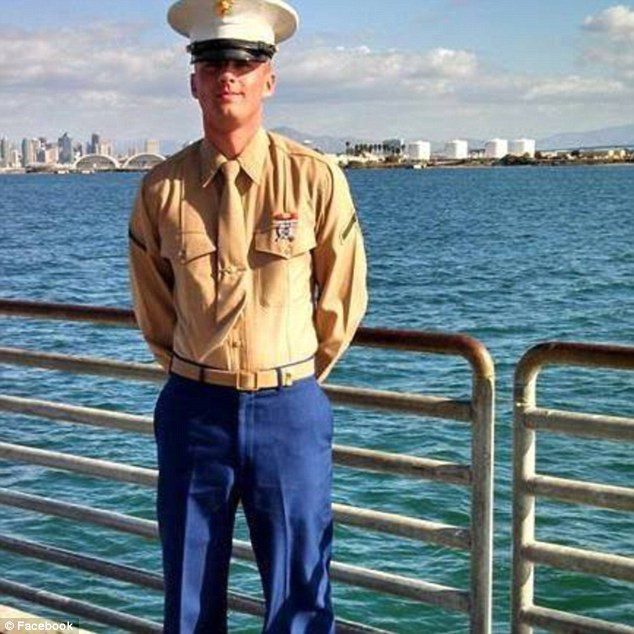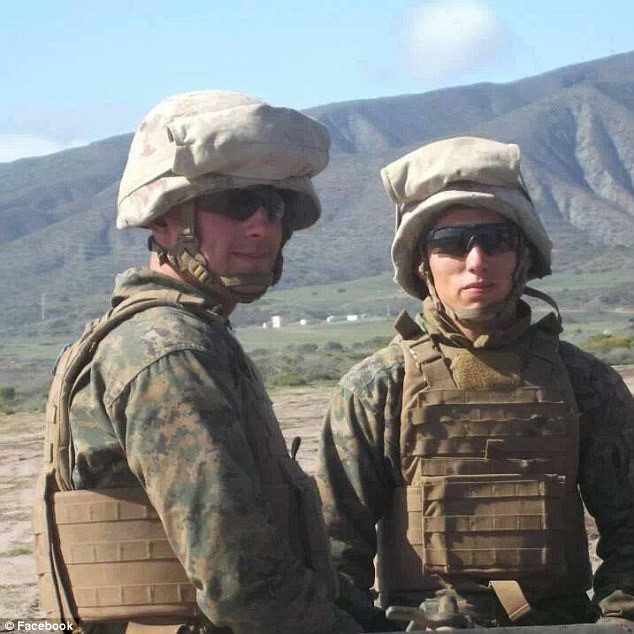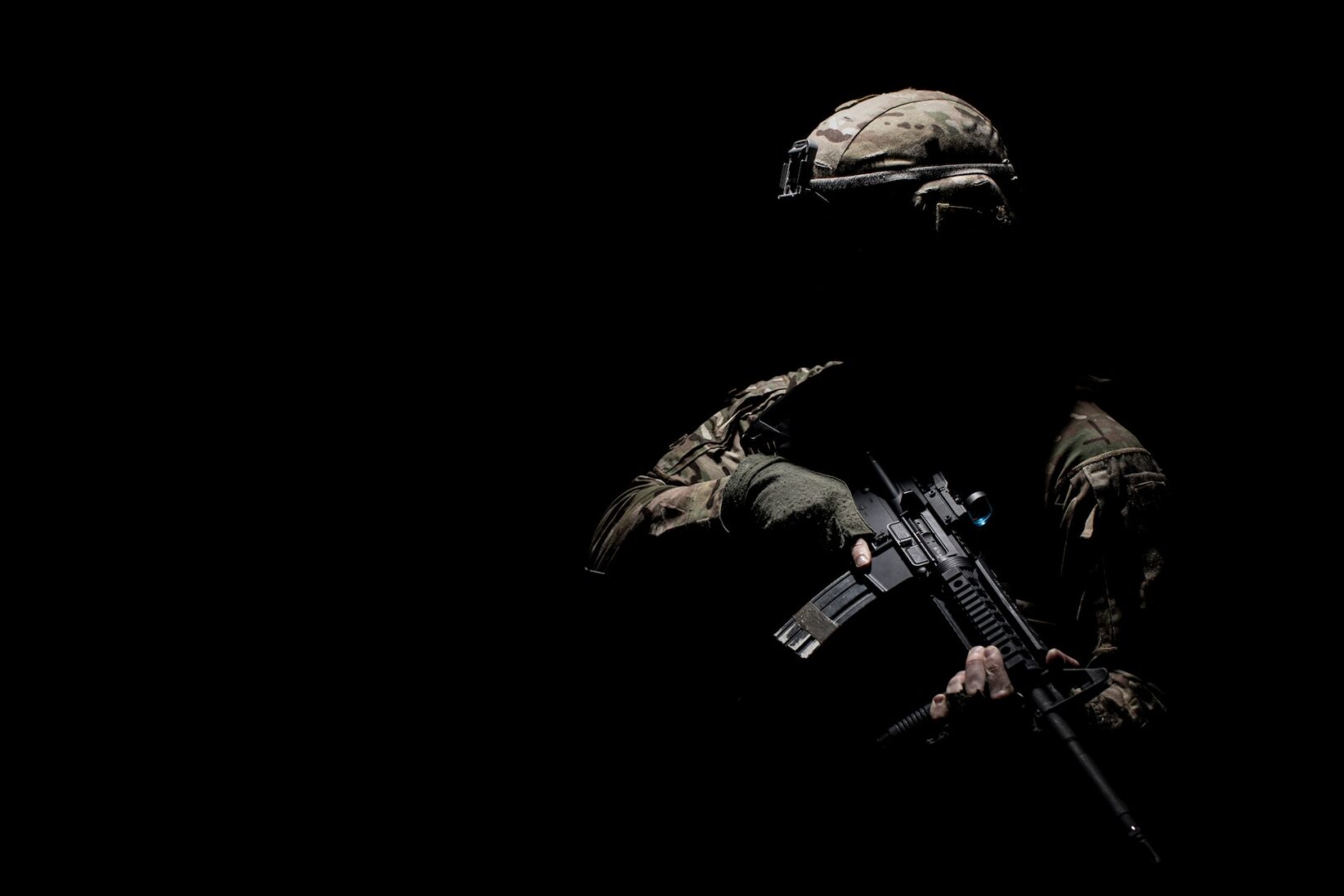
Steven John Szymanski
Lance Corporal, United States Marine Corps
October 11, 1990 – October 21, 2014
Age – 24
Midland, MI
Battery G, 2nd Battalion, 10th Marine Regiment, 2nd Marine Division. Camp Lejeune, NC
Died in an incident with a vehicle during a training exercise at Ft. Bragg, North Carolina
LCPL Steven Szymanski was killed in a “vehicular mishap” during a training incident at Fort Bragg. The Marines have been at Fort Bragg since Oct. 12 for training. They have been firing 155 mm howitzers, which exceed the size of artillery they can fire at Camp Lejeune. He was a crewman for the light armored vehicle.
Steven proudly served his country, enlisting in the U.S. Marine Corps in September 2013 after earning an Associate’s Degree in Criminal Justice. He graduated from Midland High School in 2008. Steven loved to take his Doberman, Dag, on long runs with him. He enjoyed weight lifting, hanging out with friends (who called him Shiz), listening to music, hiking, fishing, hunting and golfing. He was always smiling and trying to make people laugh and ready to listen and help out when he could. He was loved by many and will forever be in our hearts.
People would say his smile would make you smile and he was a tough-minded and motivated person who liked to exercise and stay in shape. He was a Marine through and through.
Following is article from Marine Corps Times, Feb 3, 2015, from a Freedom of Information request of the Marine Corps investigation.
Vehicle seat problem led to second Marine’s death
By Hope Hodge Seck
Feb 3, 2015
Lance Cpl. Steven Szymanski, a 24-year-old LAV driver with 2nd Light Armored Reconnaissance Battalion, was killed after he accidentally struck a pneumatic seat lever. (Cpl. Jad Sleiman/Marine Corps)
A lance corporal killed in October was the second Marine to die due to a deadly seat glitch in the Corps’ line of Light Armored Vehicles — and nearly a dozen others have reported having close calls with the faulty mechanism.
Lance Cpl. Steven Szymanski, a 24-year-old LAV driver with 2nd Light Armored Reconnaissance Battalion, was killed Oct. 21 at Fort Bragg, North Carolina, after he accidentally struck a pneumatic seat lever, which caused it to elevate with considerable force and trapping his neck between the seat back and the vehicle. The accident was detailed in the Marine Corps’ investigation into the mishap, which was obtained by Marine Corps Times through a Freedom of Information request.
The report also includes accounts from 11 other Marines interviewed during the investigation who indicated the seat mechanism could have caused even more deaths. One Marine reported a close call with the device as recently as a month before Szymanski’s death.
The day of his death, Szymanski, 24, of Midland, Michigan, was had been en route to Fort Bragg with his unit, 2nd Light Armored Reconnaissance Battalion, for an annual artillery training exercise known as Rolling Thunder. Much of Oct. 21, 2014 — what would be Szymanski’s his last day was spent in a vehicle convoy from Camp Lejeune to Fort Bragg making the 100-mile haul between the two North Carolina bases.
Szymanski arrived at Bragg in the early afternoon and parked his LAV-25 at a refueling location at the base’s Bragg’s logistics support area, the report states. Wearing his camouflage utility uniform without any armored protective equipment, he went through a series of post-operational vehicle checks and maintenance. Sometime before 5 p.m., while Szymanski sat in the driver’s seat, he accidentally struck the lever, which caused the seat to elevate. . a pneumatic lever, causing the seat to elevate with considerable force and trapping his neck between the seat back and the vehicle.
A corpsman who responded to calls for help would estimate that Szymanski had been trapped in that strangling position for at least 15 minutes before he was discovered, unresponsive, around 5 p.m., according to the report.
The lance corporal was quickly extricated and treated on-site by corpsmen, who tried to revive him by inserting oral and nasal airways, performing CPR and applying an IV. Multiple corpsmen testified, however, that they believed Szymanski was gone prior to his removal from the LAV. He would be formally pronounced dead at Bragg’s Womack Army Medical Center just after 6 p.m.
His death would ultimately be ruled a traumatic asphyxiation, the report states.
Perhaps most frightening about this freak accident is its grim similarity to the tragic death of another member of 2nd LAR less than three years prior. Not three years before. Lance Cpl. John Cagle, was killed in Afghanistan’s Helmand province Sept. 28, 2011 when a hydraulics mechanism caused his LAV seat to fly up, crushing his neck between the seat back and the ceiling.
Airman First Class Kyle Daniels, a communication and navigation technician assigned to the 60th Aircraft Maintenance Squadron, secures the toes on the ramp of a C-5 Galaxy. The 60th Maintenance Squadron was responsible for generating aircraft throughout the night in support of Crisis Look 14-04, Travis Air Force Base, 3-6 Sep 2014. (Released – U.S. Air Force Photograph/Heide Couch)
Over the course of the investigation into Cagle’s death, 21 other Marines with 2nd LAR would report having inadvertently triggered the seat’s rapid elevation mechanism. Some said they had become trapped and had to call for help.
That investigation also led to a series of changes designed to make the LAV seats, which are — designed to be blast-resistant in case of a roadside bomb detonation, — safer and less likely to get triggered by accident.
The Marine Corps fielded a seat modification kit in November 2011 designed to shield the pneumatic lever with a bracket to keep it from getting pushed accidentally. A Corps-wide memo released from just days after Cagle’s death warns LAV operators to use a seat height locking pin at all times and adds an extra warning to the vehicle stating that the seat back height and the elevating mechanism “could create a safety concern for vehicle occupants that could result in serious injury or death.”
These events make it all the more shocking that the same tragedy could befall Szymanski. The mishap investigation into Szymanski’s his death — about three years later — cites statements from multiple LAV crewmen, names redacted, who testify that their training regarding the seat glitch was perfunctory at best.
“When we went over the seat height lock it was very brief and we didn’t talk much about it,” said one LAV driver, a lance corporal. ” … There wasn’t any emphasis on draining air tanks of locking the seat. During one of the classes I remember the instructors mentioning a Marine who was killed by his seat on a deployment because he didn’t lay his seat down flat.”
Another lance corporal said he remembered being told a Marine had died, but it was never made clear how.
“Most of the classes we received were very fast paced and I am sure they were going too fast,” the Marine said. “So we didn’t pay attention to the seat lock and to drain the air tanks.”
The company maintenance chief who inspected Szymanski’s vehicle after he had been freed found that the height locking pin was “rusted and seized in place,” preventing the seat’s height from being locked safely into position.
Documents show Marine officials moved rapidly to prevent any more LAV seat accidents. The battalion had already begun to replace the vehicle’s blast-resistant seats with a legacy seat earlier in 2014 at the order of 2nd LAR’s commanding officer. The plan had been to replace the seats systematically as the vehicles underwent depot maintenance.
On Oct. 24, three days after Szymanski’s death, the Marines issued a “deadline safety of use” message that stopped use of LAVs with the old blast seats. All vehicles received the legacy seats before the end of January, according to the report. The investigation report’s author also recommended that the document be forwarded to all LAR battalions to prevent future tragedies.
But accounts from 11 Marines interviewed during the investigation indicated the seat mechanism could have caused even more deaths.
One lance corporal said he had found his head and neck pinned to the roof of the vehicle in July 2014 after a driver’s seat malfunction caused a delayed response in the elevation mechanism. He narrowly escaped injury by struggling to find the seat lever and release it. Another lance corporal said the seat had smashed his head multiple times over a two-month period between April and June 2014.
“At times, even hitting a bump in the road has caused the seat to raise,” the lance corporal wrote.
One private first class wrote that he had been in an LAV blast seat just a month before Szymanski’s death and had the seat elevate repeatedly, pinching his neck against the upper hatch.
The report found Szymanski’s death occurred in the line of duty and not due to his own misconduct, but did little to explain how a deadly scenario had been permitted to repeat itself.
“Failure to adhere to technical manual procedures and to conduct proper required preventative maintenance checks and services were contributing factors of this accident,” the investigating officer wrote.
Szymanski’s parents, John and Dawn Szymanski, said they had not been provided a copy of the investigation report by the Marine Corps. They did not immediately have a comment on its findings.


